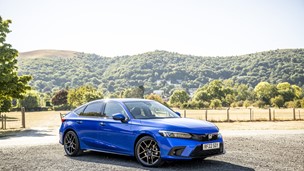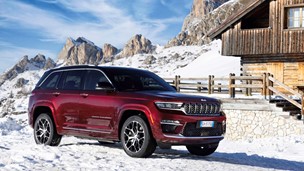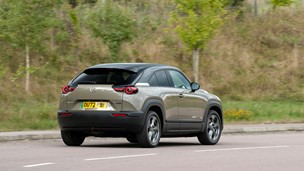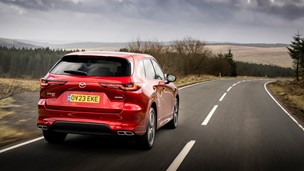"It was a problem, certainly, but a nice one to have." That was the reaction of Pierre Loing, Nissan Europe's Vice President of Product Planning, to market research which showed that customers of the old X-Trail wanted the new one to be pretty much the same.It is and it isn't. The new X-Trail follows the basic concept of its predecessor, but it's quite different under the skin, not least in the fact that it uses the same platform as the Qashqai. The X-Trail is now substantially longer than before, and it does feel bulkier, though there's compensation in the form of increased luggage space.This now amounts to 603 litres with the 40/20/40 split rear seat in place and 1773 with it fully folded. The folding operation is simple enough, though all the parts seem quite lightweight - one of several aspects which makes the X-Trail feel less like a premium SUV than it might do. The seat itself doesn't offer a great deal of room for rear passengers (especially for the heads of taller ones), but they can improve the situation by reclining it if they feel the need.But once the seat is folded you get a completely flat load area, and one which is enhanced by further storage space under the washable upper floor of the luggage compartment. One half of this section has a drawer in it, which could prove very useful, but if you just want the space you can remove the upper floor altogether (this does mean that the load area is no longer flat, but there you go).As with the previous X-Trail, the new one is an only mildly serious off-roader, though it was capable enough to impress Mike Grundon when he went mud-plugging in northern Greece for his launch report. At low speeds you can switch the All mode 4x4-i system to provide permanent drive to both axles; on tarmac, the choice is between permanent front-wheel drive or a mode which directs up to half the power to the rear wheels in difficult conditions.The need for this part-time 4x4 facility varies according to which X-Trail you're talking about. Less powerful versions don't require it in normal road driving, but the model tested here does. This one uses Renault's two-litre dCi turbo diesel engine in 171bhp form (the "173" in the car's title refers to the same output expressed in metric PS units), and that's enough grunt to put the X-Trail to some trouble if you use your right foot too enthusiastically.Hard acceleration out of corners can cause the car to rear up on its slightly over-soft suspension, which is the sort of thing that can get you into trouble if you're not careful. Part-time 4x4 eases the situation quite a lot, but you still wouldn't want to overdo it.Passengers may be keen to advise you to go easy in any case. Even on only mildly undulating roads the X-Trail is rather bouncy, to the extent where sensitive occupants might begin to complain of motion sickness. On rougher tarmac still the driver can start to feel some mechanical shaking through the steering - another example of the X-Trail losing ground to its more obviously premium-like rivals.Mind you, in other ways the steering is the best part of the driving experience. It's firm enough to provide decent feel in the country, but light enough for even the most fiddly manoeuvring in town (where the turning circle - surprisingly tight for a car of this size - is another bonus).It would be a good idea to avoid having to do much reversing. That's not because the X-Trail is especially cumbersome, but because of the immense blind spots caused by the smallish rear window and hefty rear pillars. Rear parking sensors are essential, but they're available only with the eXpedition and eXplorer packages available as options with the Sport and Aventura trim levels respectively.A word about trim levels, since we're on the subject. The X-Trail range starts with the Trek, and moves up through Sport to the Aventura specification tested here. Standard equipment on Aventura not available on the other cars includes black- or sand-coloured leather upholstery (the test car has the sand-coloured stuff, which I liked a lot), heated and powered front seats, an intelligent key system, electric folding door mirrors and chrome exterior doorhandles, which add £2000 to the price of the Sport.Like the Sport, the Aventura's spec list includes 17" alloy wheels (there are 16s on the Trek), a 6-CD autochanger, front foglights, cruise control, a panoramic sunroof, reach-adjustable steering and a ski hatch. It also has privacy glass on most of the windows - including the one in the tailgate, which couldn't be darkened on the old X-Trail because that would have obscured the high-level brake light. Nissan has got round that this time by placing the light above the glass.There's more to come. As mentioned previously, the Aventura can also be specified with the eXplorer upgrade, which includes xenon headlights, DVD satellite navigation and - most usefully of all, given the rear visibility situation - a rear parking camera. That adds a further £1700 to the price, and for an extra £425 you can add the eXtreme package of larger roof rails with their own forward-facing lamps.Nissan lists a model called the Aventura eXplorer eXtreme, but you can have the roof rails without all the other stuff if you want. Metallic or pearlescent paint increases the cost by another £450. Engine 1995 cc, 4 cylinders Power 173 bhp @3750 rpm Torque 266 ib/ft @2000 rpm Transmission 6 speed manual Fuel/CO2 38.2 mpg / 198 g/km Acceleration 0-62mph: 10sec Top speed 124 mph Price From £24556.00 approx Release date 01/09/2007
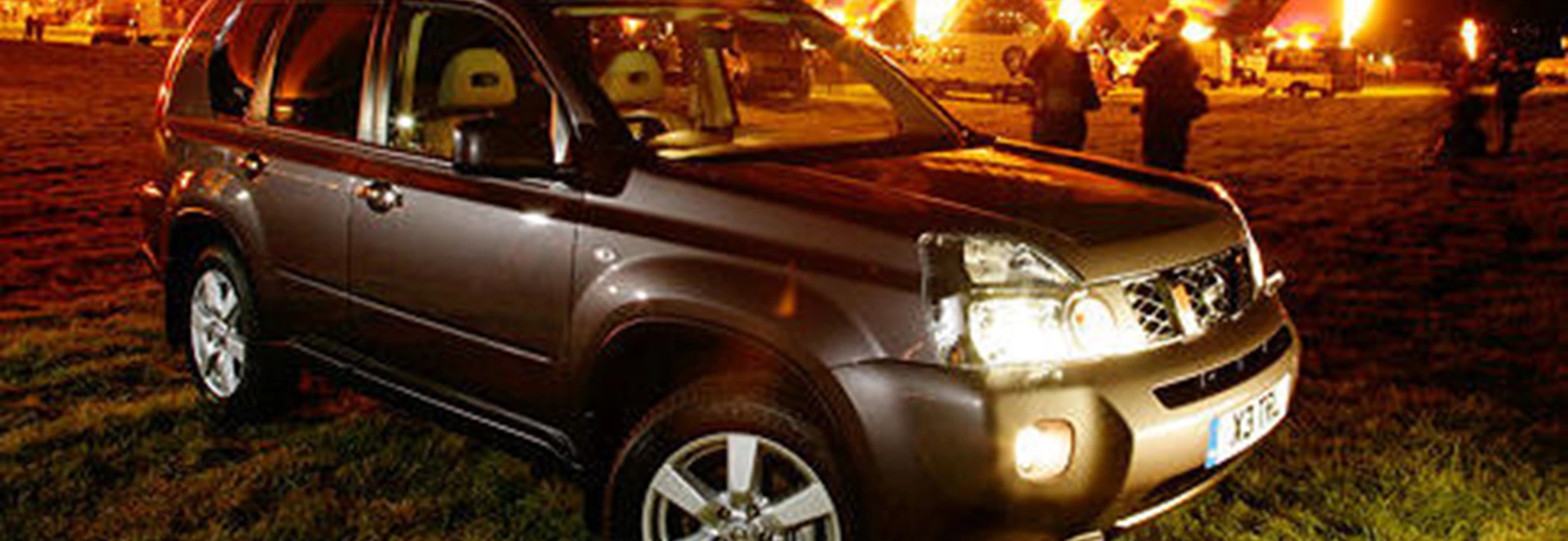
Our Rating
